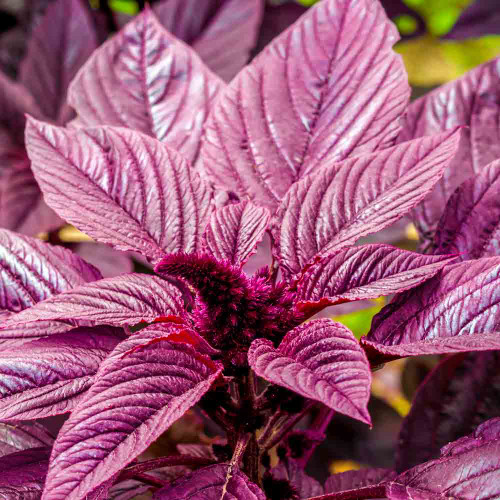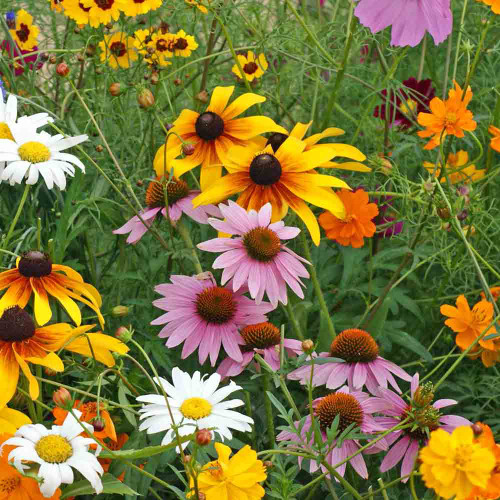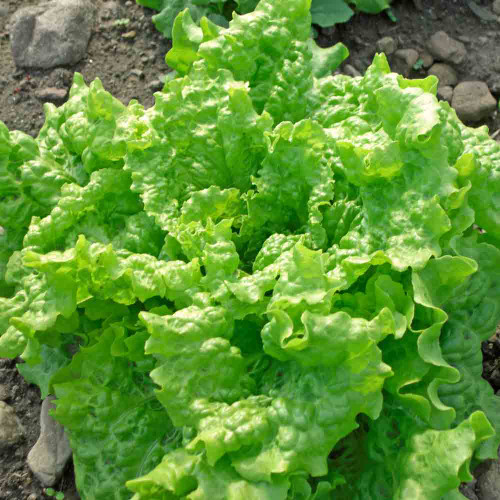Description
Love-Lies-Bleeding Amaranth - Ropes of Beauty
A captivating plant that has decorated gardens and graced tables for centuries, Love Lies Bleeding belongs to an ancient Amaranth family with a surprising history. This classic cottage garden flower, with its long, graceful wine-red strands of tiny burgundy blossoms, was known as “Huaútli” (wow-tlee) in the native Aztec Nahuatl language, was grown as food, revered in sacred rites, and valued as tribute payments as long as 6,000 to 8,000 years ago.
The name "amaranth" originates from the Greek word amarantos, meaning "unfading" or "immortal." This reflects the long-lasting nature of the amaranth flowers, which retain their color even when dried. The association with immortality also stems from the plant's persistent calyces - the part of the flowers surrounding the growing bud, often at the base of the bloom - whichremains intact long after the flowers have faded.
Love Lies Bleeding is known by a variety of other names, such as pendant amaranth, tassel flower, velvet flower, foxtail amaranth, and quilete.
Details
An annual plant that typically reaches 2-8 feet tall with multiple 12-inch long ropes of flowers, each made up of hundreds of tiny flowers, both male and female. The central stem emerges from a deep taproot system, with leaves and side branches growing outward, sometimes starting as low as the base of the plant. The leaves are oval, light green, and can grow up to 6 inches long. The leaves and seeds are edible and can be enjoyed raw or cooked.
The most striking feature of Love Lies Bleeding is its long, drooping strands of tiny, red flowers that resemble tassels, which can grow up to 12 inches long, giving the plant its memorable name. The flowers bloom throughout the growing season, providing a continuous display of brilliant color. The flowers are self-pollinating; each produces a fruit containing a tiny seed.
History
This species of amaranth is believed to have originated in the American tropics, specifically in the Andes region of South America. The plant was a staple food for the Inca, Maya, and Aztec civilizations, who valued its nutritional content and versatility. The Aztecs held amaranth, including Love Lies Bleeding, in high regard as a food source and a symbol in religious ceremonies. They called the plant huauhtli and believed it could strengthen those who consumed it.
The arrival of the Spanish conquistadors in the 16th century marked a turning point in the history of native amaranth. The plant nearly died out when the Spanish Conquistadors declared religious practices barbaric due to use in Aztec religious rituals and made growing amaranth a capital offense. However, it proved highly resilient, surviving in remote areas and eventually returning to broader cultivation.
Love Lies Bleeding saw a resurgence in popularity in the Victorian era thanks to its ornamental qualities. The Victorians admired the tall, graceful stalks and striking, long-lasting flowers, incorporating them into their gardens and even assigning them a symbolic meaning in the language of flowers, where they represented hopeless love.
Today, it is grown in many parts of the world as an ornamental plant, for food, and even as a medicinal herb. It may persist for a short time near areas where it has been previously grown, making it a relatively low-maintenance and manageable plant for gardeners.
Uses
Love Lies Bleeding is a versatile kitchen ingredient with edible leaves and seeds. The leaves are mildly flavored and can be eaten raw or cooked, like spinach, making them perfect for salads, soups, stir-fries, and stuffing into sandwiches.
The seeds are tiny but nutrient-packed with protein, fiber, and iron. They can be cooked and eaten like oatmeal, added to soups and stews, or ground into flour for gluten-free baking.
Here are some different uses of Love Lies Bleeding:
- Popping: The seeds can be popped like popcorn, providing a light and crunchy snack with a nutty flavor.
- Alegría: In Mexico, popped amaranth is combined with honey, molasses, or chocolate to make a traditional candy called alegría, which means "happiness" in Spanish.
- Paratha: In Indian cuisine, amaranth flour is used to make paratha, a flatbread similar to a thick tortilla, often stuffed with savory fillings like potatoes or vegetables.
In the garden, Love Lies Bleeding is a popular ornamental, prized for its dramatic flower clusters and vibrant color. It adds a touch of exotic beauty to gardens and is often used in borders, beds, and hanging baskets. The long, drooping flower strands create a striking visual effect, especially when planted in masses or cascading over walls or fences. The flowers attract multiple pollinator species, can be cut for fresh or dried arrangements, and the seedheads attract birds to the garden.
Companion Planting
Beneficial companion plants -
- Legumes such as beans or peas - Fix nitrogen and improve soil fertility; climbing beans can use amaranth as a trellis.
- Corn - Similar growing requirements; mutually beneficial.
- Lettuce and Eggplant - Share similar nutrient needs.
Antagonistic plants -
- Mint - Aggressive spreader that can overtake amaranth.
Growing Tips
Love-lies-bleeding amaranth is relatively easy to grow, tolerating poor soil and full sun, but appreciates some afternoon shade in hot climates. Direct sow seeds outdoors after the last frost, when the soil is warm to your bare hand in the morning. Sow the seeds shallowly, barely covering them with soil. Amaranth prefers consistently moist soil when young but can tolerate some drought once established.
Pinching back the growing tips of young plants can encourage bushier growth and more flower production.
Harvest Tips
Love-lies-bleeding is one of the few garden plants that offer a triple harvest: the beautiful flowers for fresh or dried arrangements and the fresh leaves and nutritious seeds for culinary use.
Harvesting Leaves
You can begin harvesting the leaves as a fresh spinach substitute when the plant is over two feet tall. The smallest leaves at the top of the plant will be the most tender and delicately flavored, while older and larger leaves will have a more robust flavor. Treat as a cut-and-come-again, harvesting from the topmost growth of the branches.
Harvesting Flowers
Whether enjoyed in fresh or dried arrangements, the crimson flower tassels keep their vibrant color and form for an extended period.
- For Fresh Arrangements: Cut the flower stalks when about three-quarters of the flowers are open. They will last 7-10 days in a vase.
- For Drying: Harvest the flowers when the seeds begin to set and the flowers feel firm to the touch. Hang the stalks upside down in a cool, dry place for at least 10 days to dry.
Harvesting Seeds
Amaranth seeds ripen about three months after planting. They are ready to harvest when they readily fall from the flower head when shaken.
- Collecting Seeds: Hold a bag under the flower head and gently rub the tassel to release the seeds. You can also cut the dried flower heads and shake them in a bag or over a container to collect the seeds.
- Cleaning Seeds: Remove any chaff or debris from the seeds by winnowing or using a sieve.
- Storing Seeds: Store the cleaned seeds in an airtight container in a cool, dry, and dark place.
From the soil to the seed to the food you eat - we'll help you grow your best garden!















